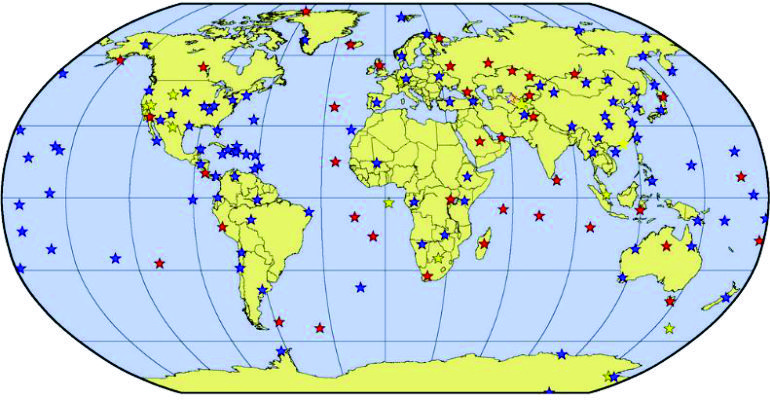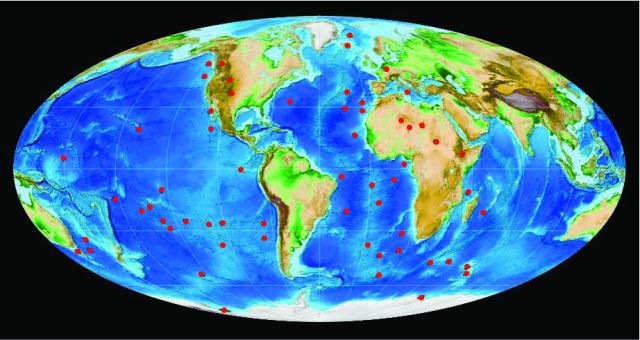“Kareem, how did we learn this stuff about the Earth’s insides? I mean, clouds and winds hundreds of miles down?”
“Fair question, Eddie. Jules Verne’s Voyage to The Center of The Earth couldn’t happen, because hollow volcanic tubes don’t go near far enough down. Drilling’s not useful for exploring the mantle — we’ve only gotten about six miles through the seafloor crust and that’s still probably a dozen miles up from where the mantle starts. Forget what you’ve seen in the comics or a movie, we won’t in our lifetimes have a sub‑like vehicle that can melt through rock, withstand million‑atmosphere pressures and swim through superheated lava. So what we do is oscillate, triangulate and calulate.”
“I’ll bite. Oscillate? Triangulate?”
“How we do earthquake chasing, Sy. For thousands of years, humanity experienced a quake as a local jolt. It wasn’t until the 1850s that we realized each quake incident has multiple components: a sudden rupture somewhere, the resulting shock that travels through the Earth to other locations, and maybe aftershocks from follow‑on ruptures. The shock is a whole train of waves. We used to record them on those big cylindrical seismograph drums with oscillating pens, but most stations have gone digital since the early 90s. More accurate data, easier to handle but less picturesque.”
“True. The TV weather guys love pics of the big cylinder with all the wiggly lines. How about the triangulations?”
“Suppose you feel an earthquake shock. How do you find out where the rupture occurred and how big it was?”
“Hard to do from one location. A really big one far away would give you the same blip as a small one close by. And you probably wouldn’t know how deep it was or what direction it came from. I guess you’d need to compare notes with some far‑away observers. The one closest to the rupture would have received the strongest signal.”
“Yeah, Sy, and if everybody kept track of when they felt the jolt then you could draw a map with the different times and that’d zero in on it. Uhh … three places and you’ve got it.”

“Three points makes a triangle, Eddie, you’ve just described triangulation. It’s a general principle — the more points of view you have to work with, the better the image. Seismic tomography is all about merging well‑characterized data from lots of stations. That’s why we built an international Global Seismic Network, 152 identically‑equipped stations. Here’s a map.”
“How ’bout that, Sy? Lotsa triangles, all over the world.”
“Reminds me of Feynman’s insight that an electron doesn’t take just one path from A to B, it takes all possible paths. Earthquake shocks must go around the Earth and through the Earth, so each of those stations could hear multiple wave trains from a strong‑enough earthquake. These days it’s all digital, I suppose, and tied together with high‑precision time‑ticks. Kareem, they must be able to localize within a millimeter.”
“Not really, Sy. There’s a complication the early seismologists discovered even with primitive timing and recording equipment. The waves don’t all travel at the same speed. Depending on what’s in the way some of them even stop.”
“Wait, these shocks are basically sound waves. Does sound go fast or slow or stop depending on where it is in the Earth?”
“Sonic physics, Sy. The stiffer the material the faster sound travels. About 1½ kilometer/second in water, 3 in stone and 6 in metals but those numbers vary with composition, temperature and pressure. Especially pressure, like millions of atmospheres near the center. In the early 1900s Mohorovičić saw two signals from the same quake. One P‑wave/S‑wave pair came direct through the crust, the second followed a bent path through some different material. That was our first clue that crust and mantle are distinct but they’re both solid.”
“P‑wave? S‑wave?”
“Like Push‑wave and Shake‑wave, Eddie. S‑waves shake side‑to‑side but fluids don’t shake so they block S‑waves. P‑waves pass right through. S‑waves traversing the LLSVP ‘clouds’ mean the regions are probably solid, but the waves don’t go as fast as a solid should carry them. It’s a strange world down there.”
~~ Rich Olcott






